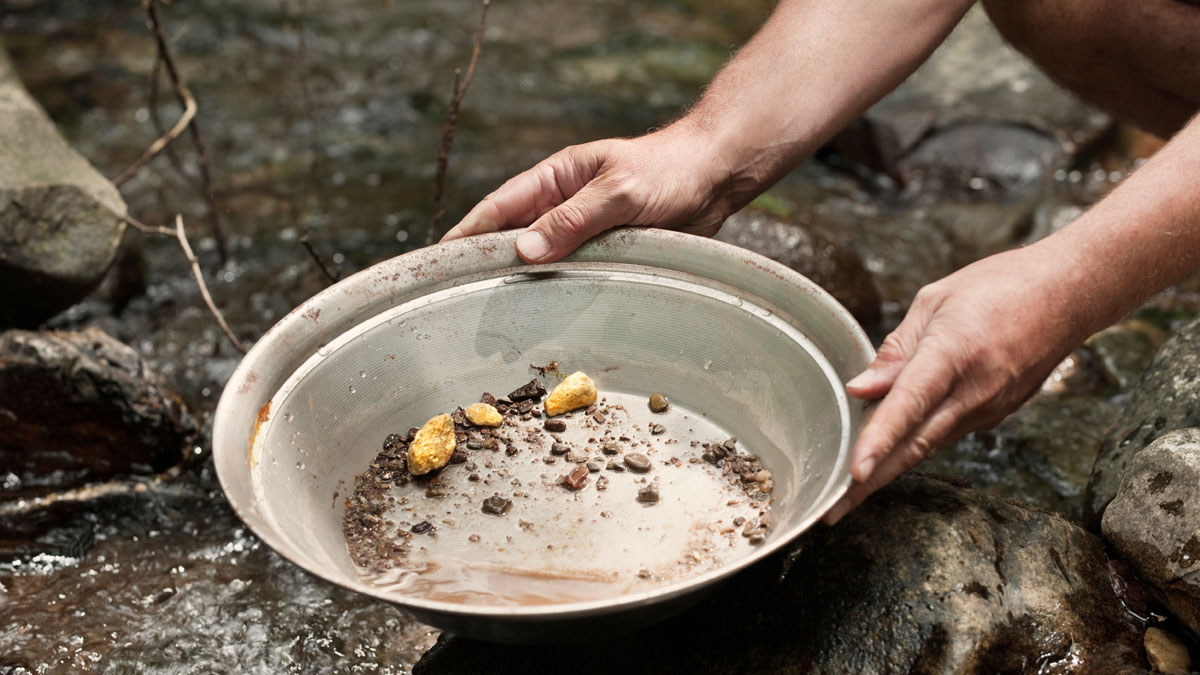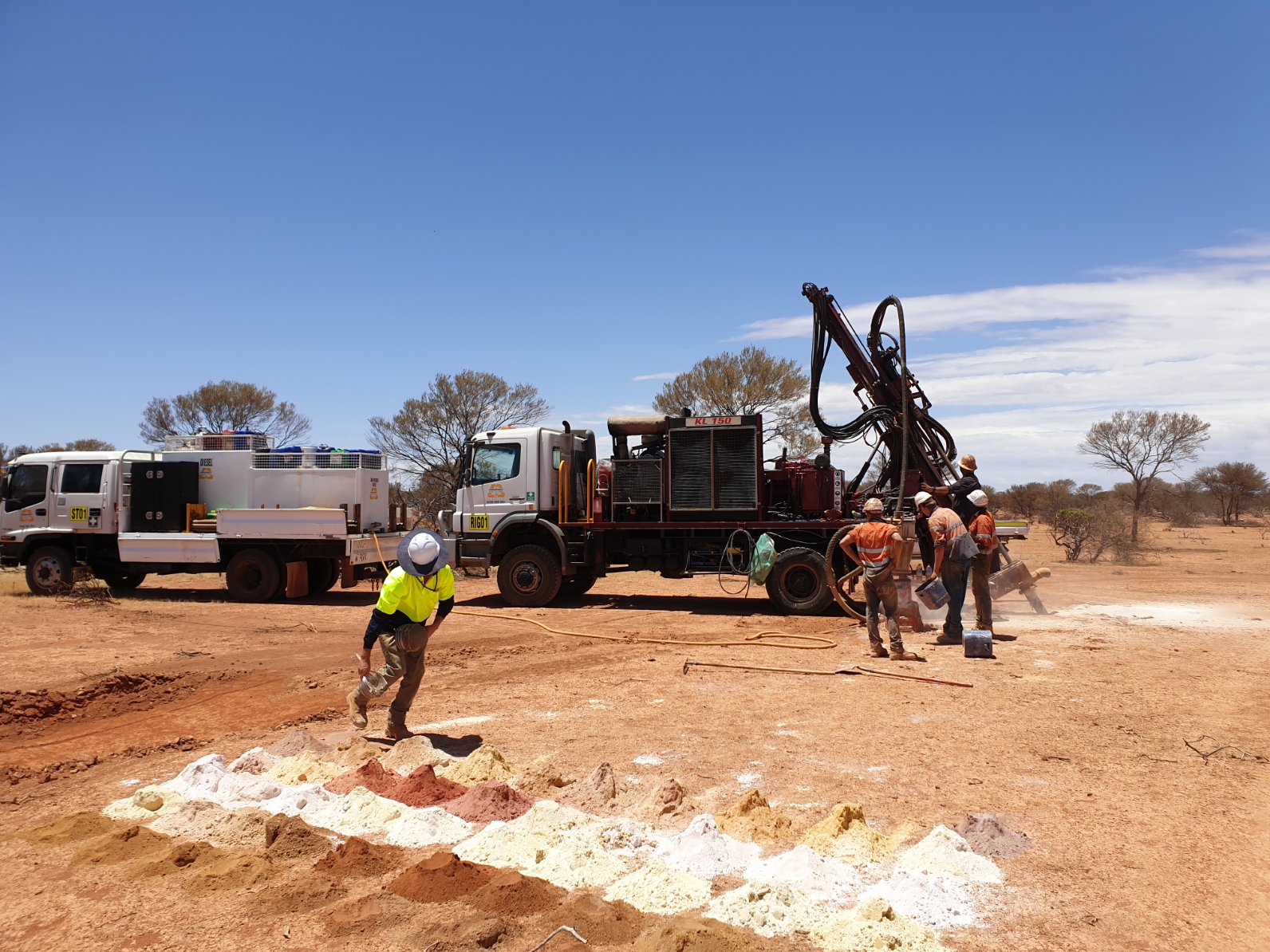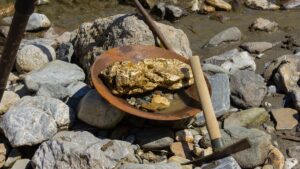Treasure chest: Great Boulder to unlock its big gold discoveries in WA’s Mid-West

Pic: Getty
After listing on the ASX in 2016, Great Boulder has seen its market cap grow 12-fold from around $8 million to the ~$55 million it is today.
One reason for this, Great Boulder (ASX:GBR) managing director Andrew Paterson says, can be attributed to the timing of consecutive gold discoveries the company made during May last year.
“We were at the RIU Conference in Sydney, and we had consecutive announcements two days in a row – one from Whiteheads and the other of some really high-grade results at Side Well,” he said.
“That really caught the market’s attention, and after that we continued drilling at Side Well, which throughout the second half of last year returned a nice run of continuous high-grade results.
The best of which, he said, was one of the “highest-grade gold intersections on the ASX for the whole year with 14m at 36 g/t.”
Air core drilling program at the Mulga Bill prospect within the Sidewell Project.

Flagship Side Well Project
GBR’s Side Well project lies northeast of Meekatharra in Western Australia’s Murchison province with neighbours including the Westgold (ASX:WGX) Meekatharra operation immediately to the west and Meeka Gold (ASX:MEK) with its Andy Well Mine to the north.
Because of the number of high-grade results returned at the project, Paterson told Stockhead it has quickly become the company’s flagship project.
Effectively a greenfield discovery under alluvial cover, Paterson said some previous regional drilling had been undertaken at the site in 2009/2010 by Doray Minerals before its merger with Silver Lake Resources (ASX:SLR).
“More diamond drilling is planned for February, which will give us the structural information concerning targets and orientations of the mineralisation at the Mulga Bill deposit,” he said.
“The work we are doing in the next 6 months will be intended to scope out an exploration target and continue to infill that with more drilling – ideally accelerating the pace of drilling as we work towards a mineral resource.
Targeting: Mineral resource by year end
“I would really like to have a mineral resource by the end of the year, whether we get enough drilling in to achieve that or not remains to be seen but that is the loose target we are aiming for at the moment.”
Bonanza gold grades received to date include 4m at 40.68 g/t gold from a depth of 210m within a broader 9m intersection grading 21.21 g/t gold from 207m, as well as 1m at 24.48 g/t gold from 92m within a 6m zone at 5.99 g/t gold from 88m.
Assays are now pending from the remaining 33 holes in the 41-hole phase-5 RC program as well as 65 air core holes at Mulga Bill and Ironbark that were drilled concurrently last year.

Whiteheads
A 5,000m air core drilling is underway at the company’s large, shallow Whiteheads Gold Project, around 40km north of Kalgoorlie and north of the renowned Kanowna Bella Gold Mine owned by Northern Star Resources (ASX:NST).
Five regional targets will be tested, including Blue Poles South, Tektite and Highbury on the Arsenal Trend, as well as further drilling at Jubilee North and the first drill program at the Eclipse prospect.
Paterson said the program continues Great Boulders’ systematic testing that has been ongoing for the past two years.
“It’s good to have our field team back on the ground at Whiteheads while we continue developing drilling programs for Side Well,” he said.
Cosmo spin out
Great Boulder recently spun out its Yamarna Base Metals Project (copper-nickel-cobalt) into newly listed Cosmo Metals, with Ziggy Lubieniecki on board as non-executive director. GBR remains is a supportive shareholding retaining 49.5% ownership in Cosmo.
If that name seems familiar it’s because he is renowned for his discoveries in the WA mining industry, notably the 6.7Moz Gruyere mine currently churning out a decent 300,000oz of gold a year for Gold Road Resources and Gold Fields.
Thanks to Great Boulders’ hard work, the project holds a number of high-grade copper and nickel sulphide hits to follow up across the 460km land package along the west contact of the Mt Venn igneous complex.
Yamarna
Situated around 130km east of Laverton in Western Australia’s northern Goldfields, some of these hits at Mt Venn include up to 48m at 0.8% copper, 0.2% nickel, and 0.97% cobalt from 103m.
And then there’s Eastern Mafic, about 7km to the east and Winchester, a joint venture with WA explorer Ausgold.
Paterson said the decision was made to shift the company’s focus towards gold to set itself up in the long-term for becoming a gold producing company.
“There was also a pretty strong message from the market that people didn’t really understand what our strategy was – if we were a base metals company or trying to do everything,” he said.
“There was enough work at Yamarna – and drill success in previous years that we knew there was quite a lot of value in those projects – and the question was how do we realise that value.
“The spin out clearly became the best opportunity to realise value and allow the company and shareholders to benefit going forward.”
One of the key aspects of Cosmo, Paterson said, is the fact that it is quite “conservatively priced.”
“It has an asset value of five million and raised just over five million in its IPO, so theoretically it will start with a market cap of about ten million,” he said.
Given the advanced stage of these sulphide projects, that is a pretty attractive investment proposition.
This article was developed in collaboration with Great Boulder, a Stockhead advertiser at the time of publishing.
This article does not constitute financial product advice. You should consider obtaining independent advice before making any financial decisions.
Related Topics

UNLOCK INSIGHTS
Discover the untold stories of emerging ASX stocks.
Daily news and expert analysis, it's free to subscribe.
By proceeding, you confirm you understand that we handle personal information in accordance with our Privacy Policy.








